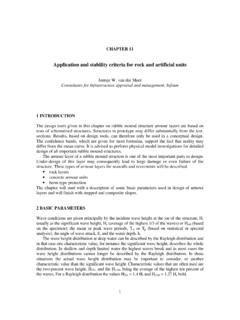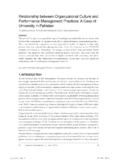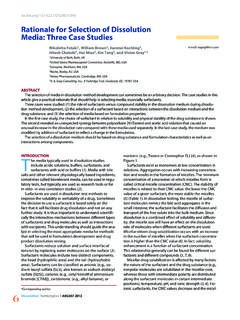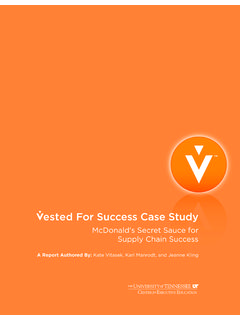Transcription of Section 4. Power Design CORE SELECTION
1 Section 4. Power Design i(20)gauss) p(2000 gauss)SaturationFlux DensityBm GaussCore Loss (mw/cm )(Typical)@100 kHz, 1000 Gauss25 C100 C25 C100 C25 C60 C100 CF3000460049003700100180225P250065005000 390012580*125R230065005000370014010070K1 500350046003900J5000550043002500W+10,000 12,00043002500 INTRODUCTIONF errite is an ideal core material for transformers, invertersand inductors in the frequency range 20 kHz to 3 MHz, due tothe combination of low core cost and low core losses. Tapewound cores do offer higher flux densities and better tempera-ture stability, advantages which may off-set their higher is an excellent material for high frequency (20 kHz to3 MHz) inverter Power supplies.
2 Ferrites may be used in thesaturating mode for low Power , low frequency operation (<50watts and 10 kHz). For high Power operation a two transformerdesign, using a tape wound core as the saturating core and aferrite core as the output transformer, offers maximum perfor-mance. The two transformer Design offers high efficiency excel-lent frequency stability, and low switching cores may also be used in fly-back transformerdesigns, which offer low core cost, low circuit cost and highvoltage capability. Powder cores (MPP, High Flux, Kool M )offer soft saturation, higher Bmaxand better temperature stabil-ity and may be the best choice in some flyback applications frequency Power supplies, both inverters and convert-ers, offer lower cost, and lower weight and volume than con-ventional 60 hertz and 400 hertz Power cores in this Section are standard types commonlyused in the industry.
3 If a suitable size for your application is notlisted, Magnetics will be happy to review your needs, and, ifnecessary, quote tooling where quantities are available gapped to avoid saturation under dc biasconditions. J and W materials are available with lapped for many cores are available from Magnetics. VDErequirements have been taken into account in bobbin designsfor EC, PQ, and metric E Cores. Many bobbins are also avail-able SELECTIONCore MaterialsF, P, K and R materials, offering the lowest core losses and high-est saturation flux density, are most suitable for high Power /hightemperature operation.
4 P material core losses decrease with tem-perature up to 70 C; R material losses decrease up to 100 C. Kmaterial is recommended for frequencies over and W materials offer high impedance for broadband trans-formers, and are also suitable for low-level Power MATERIALS SUMMARY*@80 C+@10kHzCORE GEOMETRIESPot CoresPot Cores, when assembled, nearly surround the woundbobbin. This aids in shielding the coil from pickup of EMI fromoutside sources. The pot core dimensions all follow IEC stan-dards so that there is interchangeability between plain and printed circuit bobbins are available, as aremounting and assembly hardware.
5 Because of its Design , thepot core is a more expensive core than other shapes of a com-parable size. Pot cores for high Power applications are notreadily Slab and RM CoresSlab-sided solid center post cores resemble pot cores, buthave a Section cut off on either side of the skirt. Large open-ings allow large size wires to be accommodated and assist inremoving heat from the assembly. RM cores are also similar topot cores, but are designed to minimize board space, providingat least a 40% savings in mounting area.
6 Printed circuit or plainbobbins are available. Simple one piece clamps allow simpleassembly. Low profile is possible. The solid center post gen-erates less core loss and this minimizes heat CoresE cores are less expensive than pot cores, and have theadvantages of simple bobbin winding plus easy winding is possible for the bobbins used with these cores do not, however, offer self-shielding. Lamination sizeE shapes are available to fit commercially available bobbinspreviously designed to fit the strip stampings of standard lami-nation sizes.
7 Metric and DIN sizes are also available. E corescan be pressed to different thickness, providing a SELECTION ofcross-sectional areas. Bobbins for these different cross sec-tional areas are often available cores can be mounted in different directions, and if desired,provide a low-profile. Printed circuit bobbins are available forlow-profile mounting. E cores are popular shapes due to theirlower cost, ease of assembly and winding, and the ready avail-ability of a variety of MAGNETICS BUTLER, PAEC, ETD and EER CoresThese shapes are a cross between E cores and potcores.
8 Like E cores, they provide a wide opening oneach side. This gives adequate space for the large sizewires required for low output voltage switched modepower supplies. It also allows for a flow of air whichkeeps the assembly cooler. The center post is round,like that of the pot core . One of the advantages of theround center post is that the winding has a shorter pathlength around it (11% shorter) than the wire around asquare center post with an equal area. This reduces thelosses of the windings by 11% and enables the core tohandle a higher output Power .
9 The round center postalso eliminates the sharp bend in the wire that occurswith winding on a square center CoresPQ cores are designed especially for switched modepower supplies. The Design provides an optimized ratioof volume to winding area and surface area. As a result,both maximum inductance and winding area arepossible with a minimum core size. The cores thusprovide maximum Power output with a minimumassembled transformer weight and volume, in addition totaking up a minimum amount of area on the printedcircuit board.
10 Assembly with printed circuit bobbins andone piece clamps is simplified. This efficient designprovides a more uniform cross-sectional area; thus corestend to operate with fewer hot spots than with CoresEP Cores are round center-post cubical shapes whichenclose the coil completely except for the printed circuitboard terminals. The particular shape minimizes theeffect of air gaps formed at mating surfaces in themagnetic path and provides a larger volume ratio to totalspace used. Shielding is are economical to manufacture; hence, they areleast costly of all comparable core shapes.








